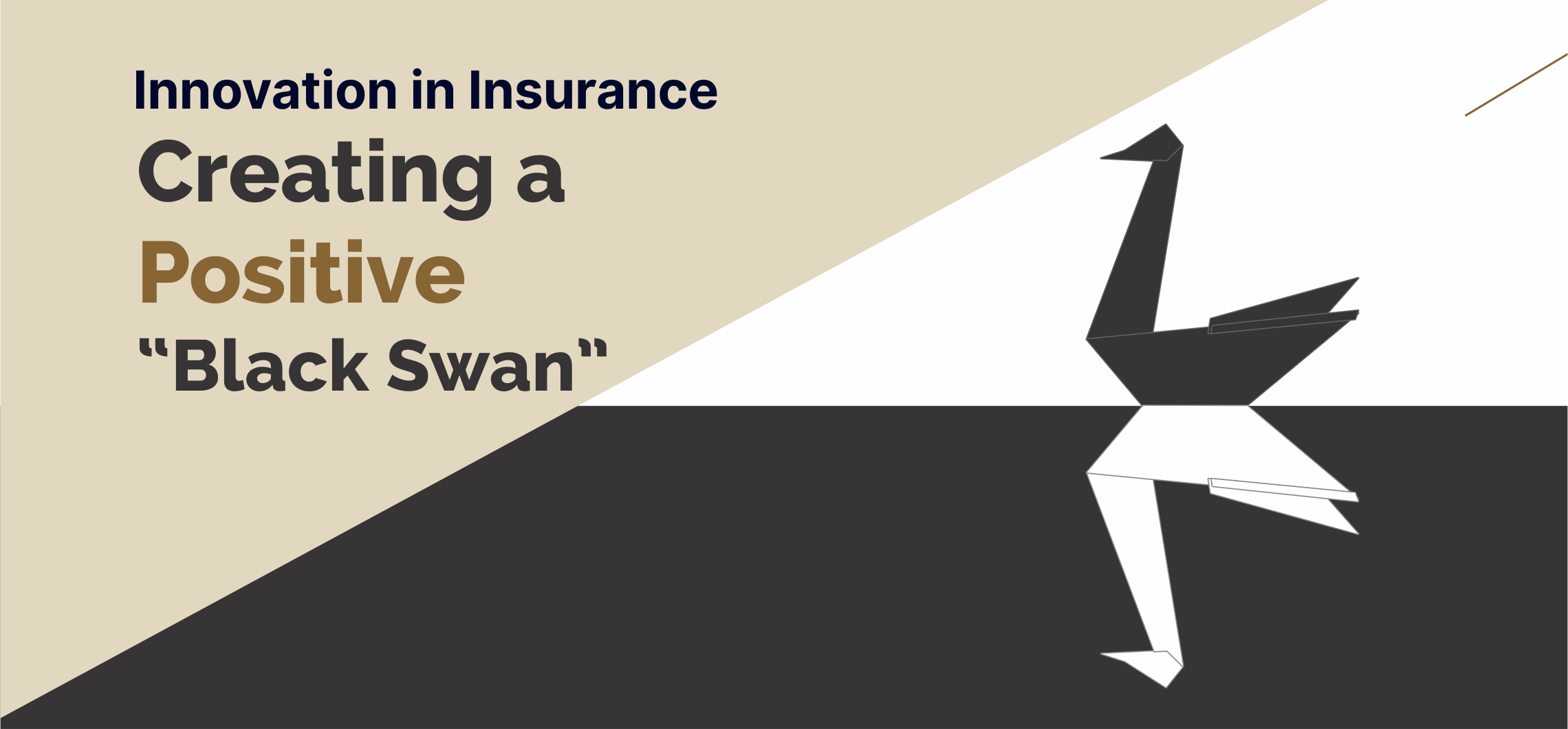In the insurance world, innovation is a key driver that propels change and reshapes market expectations. Traditionally, the insurance sector has been perceived as conservative, focusing on risk management and financial stability. However, in recent years, we have witnessed a paradigm shift: innovation in insurance is creating positive “black swans”—unexpected events that generate transformative and beneficial impacts on the industry.
What is a "Black Swan"?
The term “black swan” was popularized by essayist and mathematician Nassim Nicholas Taleb in his book The Black Swan: The Impact of the Highly Improbable. It refers to a rare, unpredictable event with significant impact, typically associated with negative consequences. However, in the context of innovation, a positive “black swan” is a disruptive event that brings substantial improvements, radical changes, and significant opportunities for those prepared to capitalize on them.
Innovation in Insurance: Breaking Paradigms
Innovation in the insurance sector has accelerated due to several factors: digital technology, shifting consumer expectations, and competitive pressure. These forces have led to the creation of new products, services, and business models that are redefining the concept of insurance.
- Personalized and Data-Driven Insurance: The adoption of technologies such as artificial intelligence and big data has enabled insurance companies to analyze large volumes of customer data. This has given rise to personalized insurance products, where policies are tailored to the specific needs and behaviors of the insured. This approach not only enhances customer satisfaction but also optimizes risk management, creating a win-win scenario for all parties involved.
- Insurtech: The New Frontier: Insurtech startups have emerged as catalysts for innovation in the sector. These companies combine advanced technology with innovative solutions to improve efficiency, accessibility, and transparency in insurance. From online insurance comparison platforms to mobile apps that allow real-time claims submissions, insurtech is challenging the status quo and creating a more dynamic, customer-centric market.
- Ecosystem-Based Business Models: Insurance companies are expanding their focus beyond traditional products towards creating value ecosystems that integrate multiple services. For example, health insurers now collaborate with wellness providers, gyms, and health-tracking apps to offer a holistic approach to the well-being of their insureds. This model not only strengthens customer loyalty but also improves health outcomes and reduces long-term costs.
Creating a Positive "Black Swan" in Insurance
The key to creating a positive “black swan” in the insurance sector lies in the ability to anticipate future needs and challenge conventions. Companies that adopt a proactive approach to innovation, exploring new technologies and business models, will be uniquely positioned to benefit from these disruptive events.
Moreover, collaboration will be essential. Insurers must work together with startups, technologists, and other ecosystem players to foster open innovation and co-create solutions that can transform the industry.
Innovation in insurance is not just a trend; it is a necessity in an increasingly uncertain and complex world. Like a positive “black swan“, innovation can be an unexpected but profoundly beneficial event that redefines the industry’s landscape. Those who are prepared to embrace this change will not only survive but thrive in the new era of insurance.
Creating a “black swan” in insurance involves introducing disruptive innovations that could radically transform the industry. Here are some bold suggestions:
- Blockchain-Based Insurance with Smart Contracts: Implement insurance policies fully based on blockchain technology, where smart contracts automate the execution of policies and claim payments without human intervention. This would eliminate intermediaries, reduce operational costs, and enhance transparency.
- “Pay-Per-Use” Insurance Models for Everything: Extend the “pay-per-use” insurance model to all types of policies, not just auto or travel insurance. For example, health coverage that charges only when the insured visits a doctor, or home insurance that activates only during periods of elevated risk.
- Collaborative Insurance Platform: Develop a collaborative insurance platform where users pool together to self-insure, sharing risks and benefits among themselves. Funds are managed in a decentralized manner, and unclaimed benefits are returned to members, incentivizing the prevention of claims.
- Behavior-Based Insurance with AI: Use advanced artificial intelligence to analyze the real-time behavior of insured individuals (such as driving habits or lifestyle) and adjust premiums automatically. This approach could offer extremely low premiums for safe drivers or healthy lifestyles, discouraging risky behaviors.
- Universal Microinsurance: Introduce a universal microinsurance system for low-income populations, where each individual pays a small daily premium (even fractions of a cent) that provides coverage in case of specific events like illness, accidents, or natural disasters.
- Insurance for the Metaverse: Design insurance policies specifically for assets and activities in the metaverse, such as insurance for digital assets, protection against cyberattacks on virtual identities, or coverage for transactions within virtual reality platforms.
- Instant Reimbursement Based on Reputation: Create an insurance system where the history and reputation of the insured (built through blockchain or AI) allow for instant reimbursement without the need for a verification process. Insured individuals with high reputations could receive payments immediately.
- Comprehensive Life Insurance Assisted by AI: Develop a life insurance policy that not only offers coverage in the event of death but also includes an AI assistant that continuously monitors the insured’s health, emotional well-being, and financial decisions to maximize longevity and quality of life.
- Dynamic Insurance for Environmental Assets: Introduce a dynamic insurance model that protects environmental assets (such as forests or coral reefs), where premiums and coverage adjust based on changes in biodiversity and climate impact. This would incentivize conservation and investment in sustainability.
- Digital Identity Insurance: Launch a digital identity insurance policy that protects users against reputation loss, identity fraud, or psychological harm caused by online attacks, including measures for the restoration of identity and digital reputation.
While these ideas may seem radical, they have the potential to catalyze the creation of a positive “black swan” that could revolutionize the insurance landscape, delivering value to both insurers and clients.




